Joel Sartore: The man who takes studio photos of endangered species
- Published
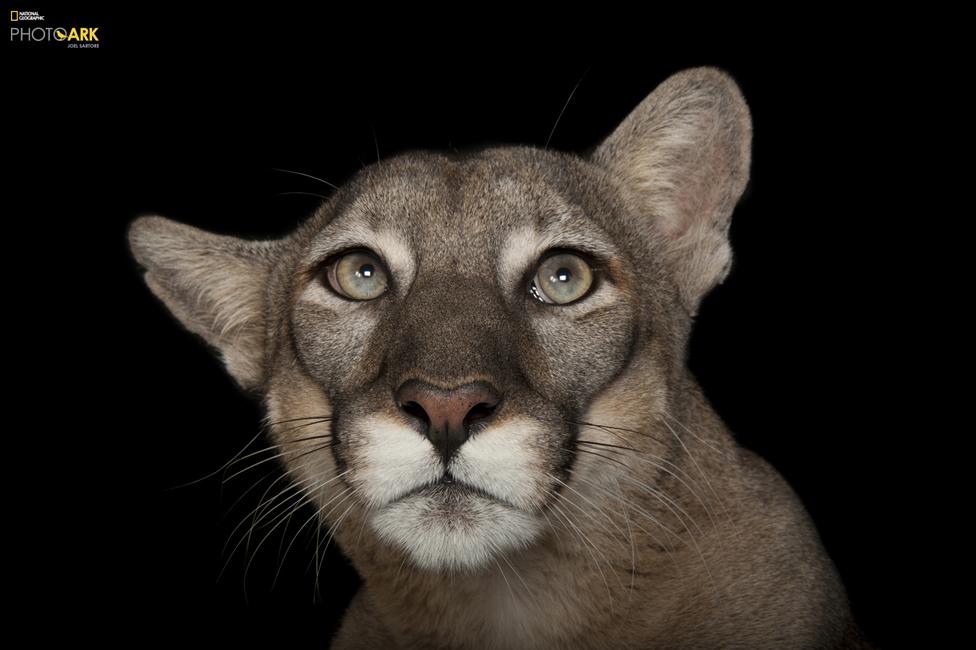
Florida Panther (Puma concolor coryi) Lowry Park Zoo, Tampa, Florida © Photo by Joel Sartore/National Geographic Photo Ark
American wildlife photographer Joel Sartore is fighting to save endangered species by making us fall in love with them.
Joel Sartore had been a National Geographic wildlife photographer for 15 years when his wife, Kathy, was diagnosed with breast cancer. With three young children at home, he took a year off work to nurse her through radiation treatment and chemotherapy.
This pause from travelling the world to take photos gave him the chance to slow down and consider the impact of of his work.
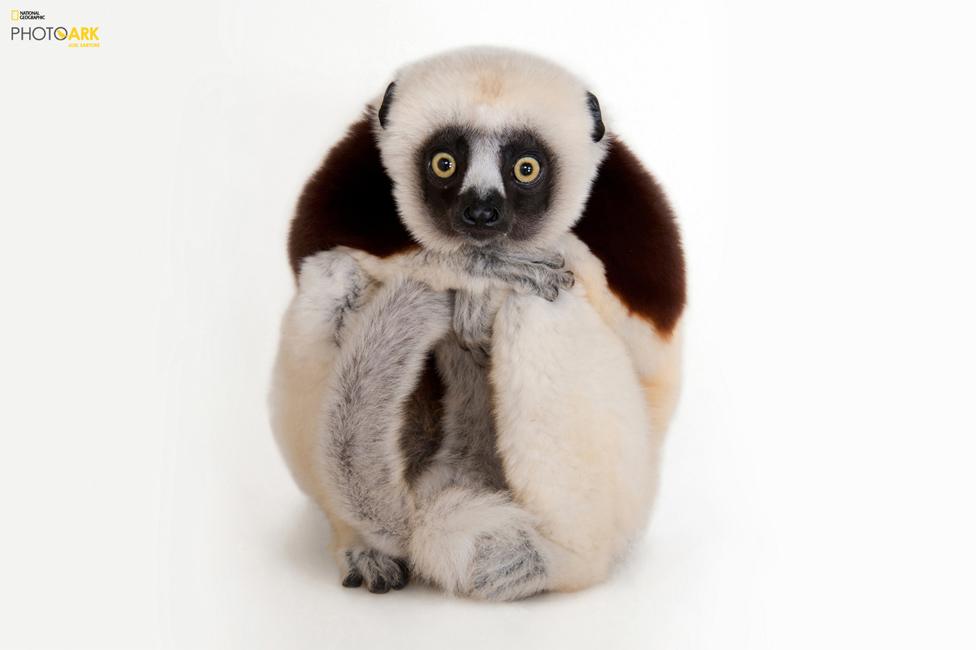
Coquerel's sifaka (Propithecus coquereli) Houston Zoo, Houston, Texas © Photo by Joel Sartore/National Geographic Photo Ark
"Magazine stories come and go," he says.
"But I had not seen the plight of endangered species getting better so I thought about what I could do to actually make a difference?"
The answer came to him while he was photographing a naked mole-rat at a children's zoo in his home town of Lincoln, Nebraska.
He decided to place the small mammal against the white background of a cutting board which he had found in the zoo's kitchen. The result was a professional studio-style portrait.
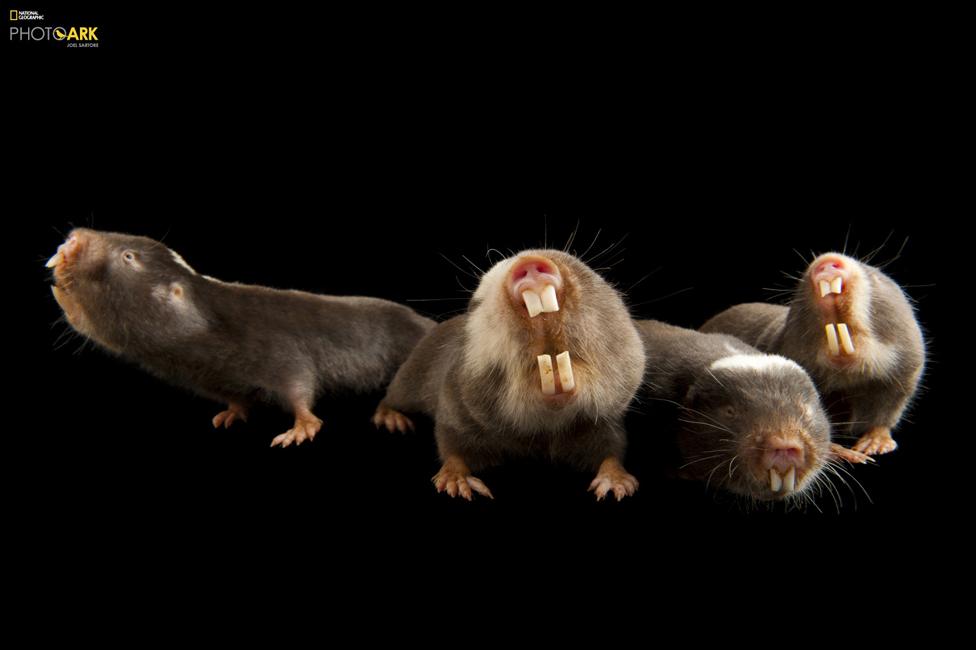
Damaraland mole rats (Fukomys damarensis) Houston Zoo, Houston, Texas © Photo by Joel Sartore/National Geographic Photo Ark
"I thought maybe if we do eye-contact, if we photograph animals where there are no distractions, all equal in size on black and white backgrounds, where a mouse is every bit as big and amazing as an elephant, then maybe we could get the public hooked into the plight of endangered species and extinction," he says.
Find us on Facebook , external
As Sartore's wife recovered, he began to travel to other zoos in his area to take more portraits.
Joel Sartore is an American photographer on a 25 year long wildlife project.
Staff co-operated by helping the photographer create sets, allocating him rooms which he could paint black or white and leaving food inside.
"Usually the animal thinks he's just coming in to get lunch, which he is, but he's also going to get his picture taken," says Sartore.
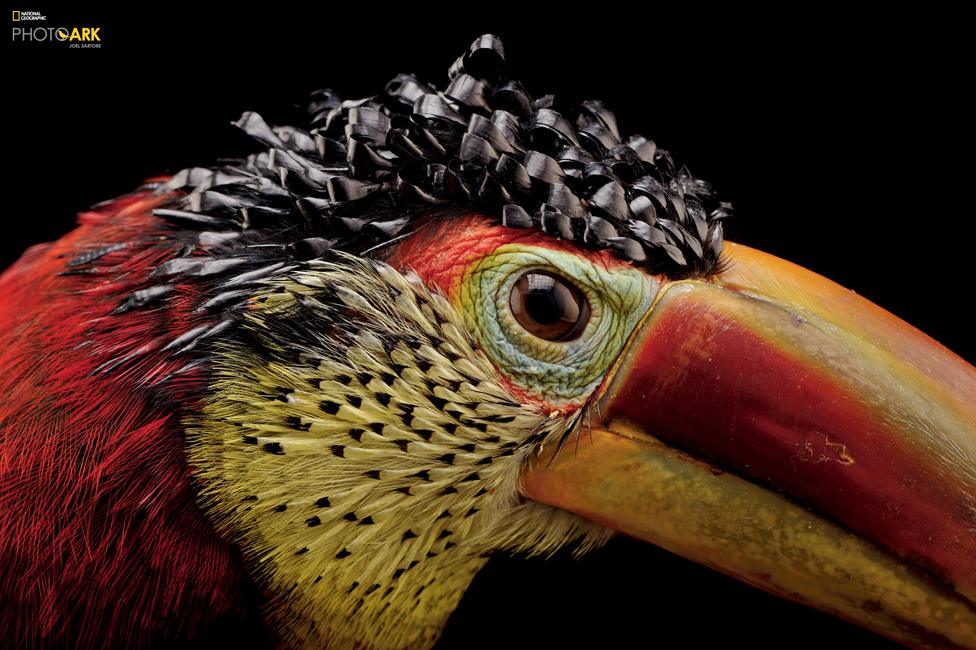
Curl-crested araçari (Pteroglossus beauharnaesii) Dallas World Aquarium, Texas © Photo by Joel Sartore/National Geographic Photo Ark
As the project grew, it caught the attention of editors at National Geographic, who commissioned Sartore to produce a few series of photographs, on amphibians for example, and America's endangered species.
The photographer began travelling the world armed with different-sized tents in which to photograph smaller animals like birds and lizards. For the larger ones, he remained reliant on the safer environment of zoos.
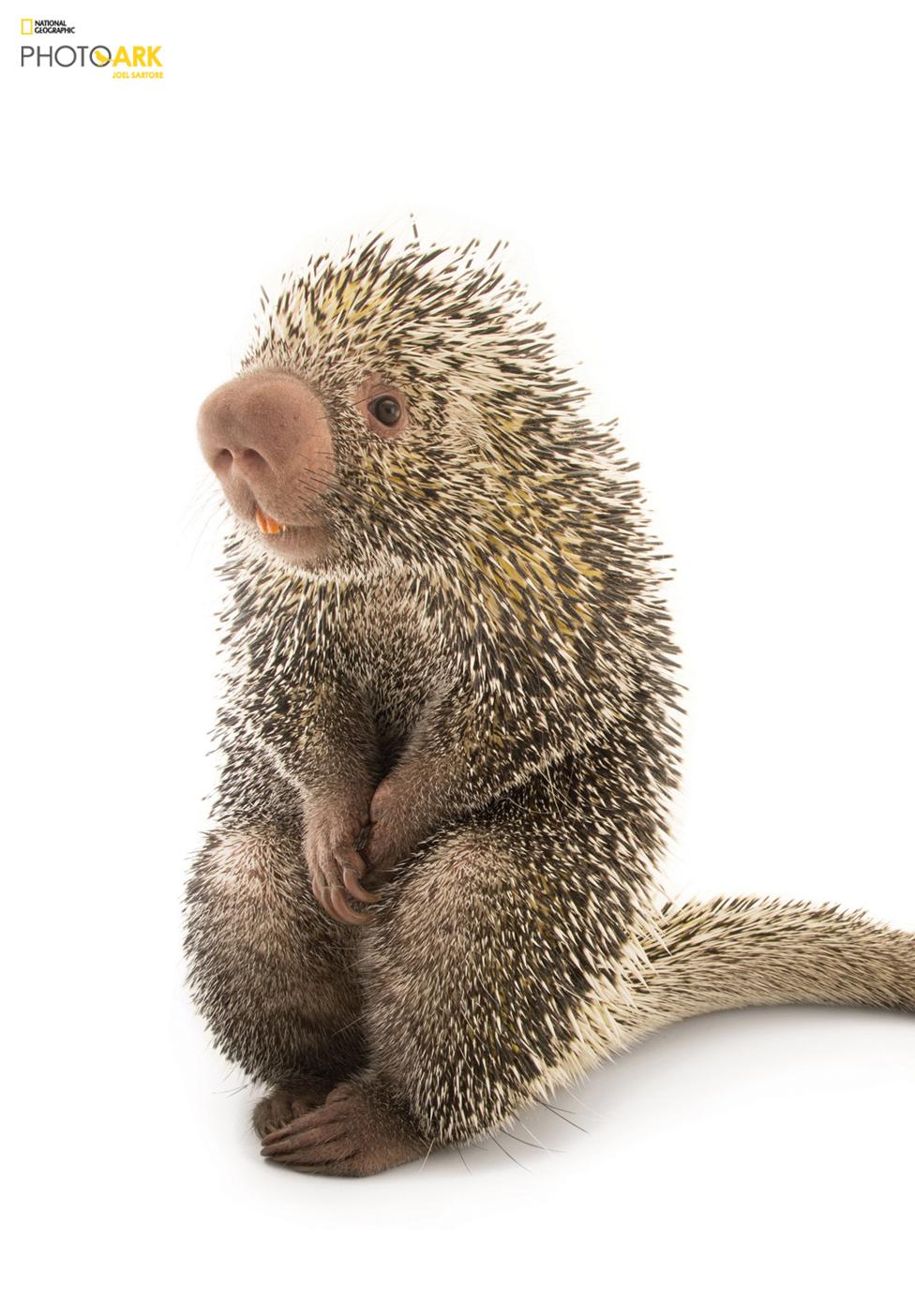
"This animal was the sweetest little guy. He gave us all sorts of different body languages and facial expressions during the shoot. I remember also that he was eating through most of the portrait session as well. So he may look shy, but he was actually very happy at this moment." © Photo by Joel Sartore/National Geographic Photo Ark
"Most of the animals I photograph are born and raised in captivity and their keepers know the critters' moods very well," he says.
"Once in a while I'll come across an animal that's really feisty and a bit aggressive, but by and large, these shoots go as smooth as butter."
He has now photographed more than 6,000 species in 40 countries. The project has developed into The National Geographic Photo Ark, and its portraits have made it on to National Geographic Magazine covers and have been projected on to buildings - the UN Building and Empire State Building in New York and the Vatican in Rome.
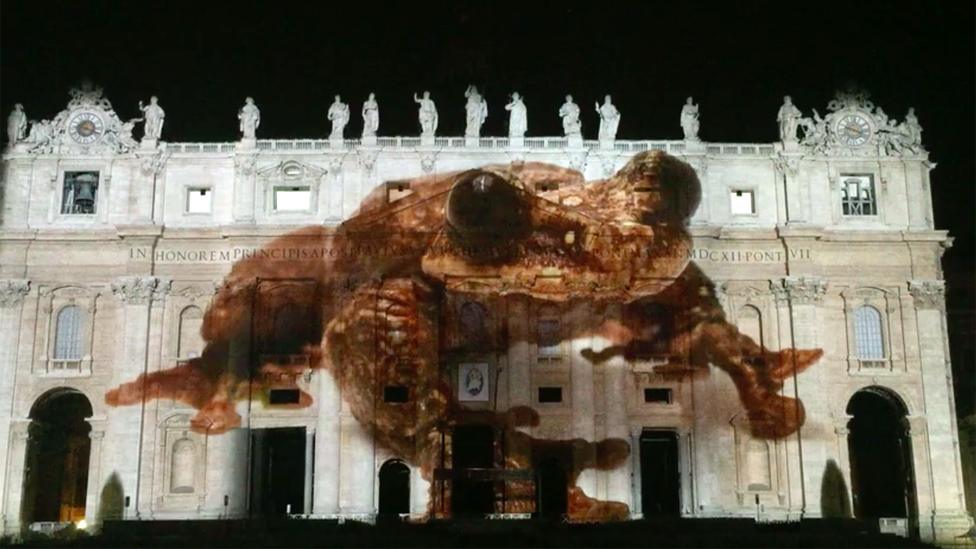
An image of "Toughie" projected onto St Peter's Basilica © Photo by Joel Sartore/National Geographic Photo Ark
Some of the species captured by the Photo Ark are on the verge of extinction.
This year, Sartore photographed Toughie, the world's last known living Rabbs' fringe-limbed treefrog.
Toughie was captured in Panama in 2005 by conservationists attempting to save as many amphibians as possible from chytrid fungus, a skin disease that can have a 100% mortality rate among frogs.
He was brought back to the Atlanta Botanical Gardens in Georgia where he mated with captured females, but none of his tadpoles survived and his female companions died. Sartore took Toughie's portrait shortly before he also died,, external in September this year.
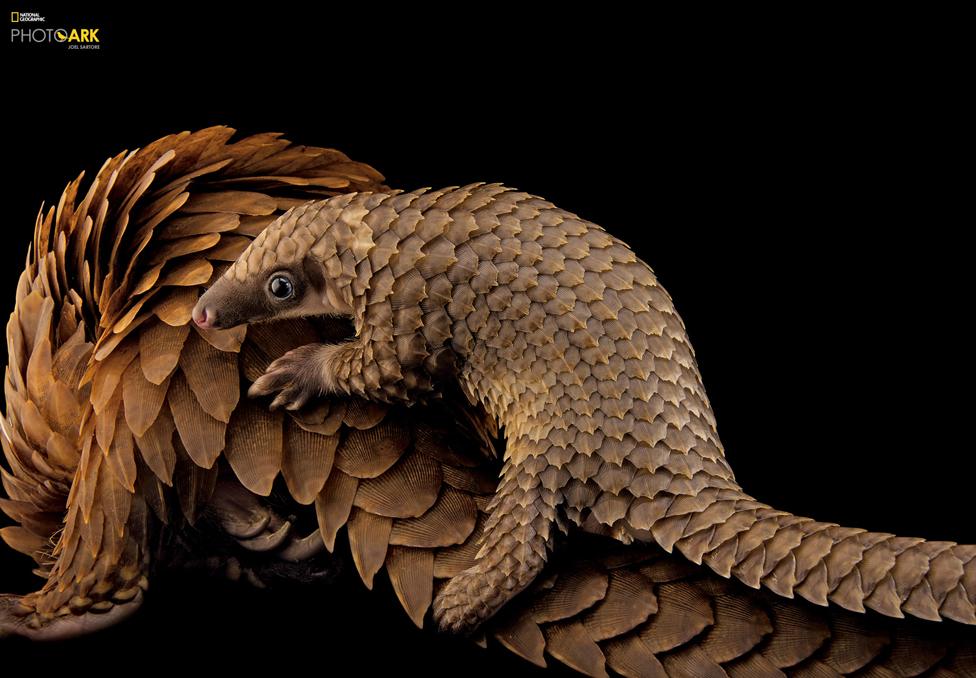
African White-Bellied Tree Pangolin (Phataginus tricuspis) Pangolin Conservation, St. Augustine, Florida © Photo by Joel Sartore/National Geographic Photo Ark
"I try to talk about him every time I give public presentations because instead of getting depressed about him going extinct, I'm going to use his story to hopefully inspire others to care," he says.
Sartore has also photographed one of the last surviving northern white rhinos in a zoo in the Czech Republic.
"We got to her just in time," he says of the animal, who was called Nabire.
"We got a very nice portrait of her and she laid down and went to sleep at the end of the shoot because she slept a lot at the end of her life."
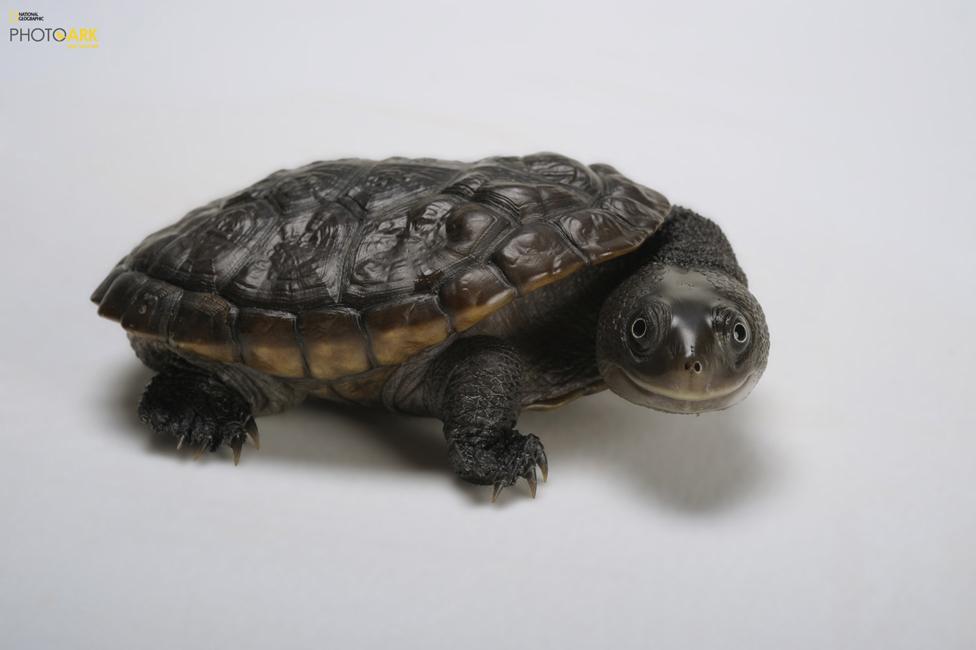
Reimann's snake-necked turtle (Chelodina reimanni) Atlanta Zoo, Atlanta © Photo by Joel Sartore/National Geographic Photo Ark
With her death, and the death of another northern white rhino in San Diego not long afterwards, there are only three of the species left, all living under armed-guard in Kenya. They are too old to breed, though a conservation project is attempting to create an embryo through IVF which would be implanted in the womb of a similar rhino species.
"It's not just the little things we're allowing to slip into extinction," says Sartore.
"It's the big stuff too, unfortunately."

A three-month-old baby chimpanzee (Pan troglodytes) Lowry Park Zoo, Tampa, Florida © Photo by Joel Sartore/National Geographic Photo Ark
Sartore hopes his project will eventually document 12,000 species and become a resource for future generations. He also hopes it will prevent other species from meeting the same fate as Toughie and Nola.
"At least 75-80% of the species that I've photographed could be saved from extinction, but people need to know they exist first and they need to fall in love with them and want to learn how they can help them," he says.
While there's an understanding that bigger animals, like polar bears and tigers, are under threat, Sartore says there is not enough awareness of the plight of smaller ones like rodents, toads and bats.
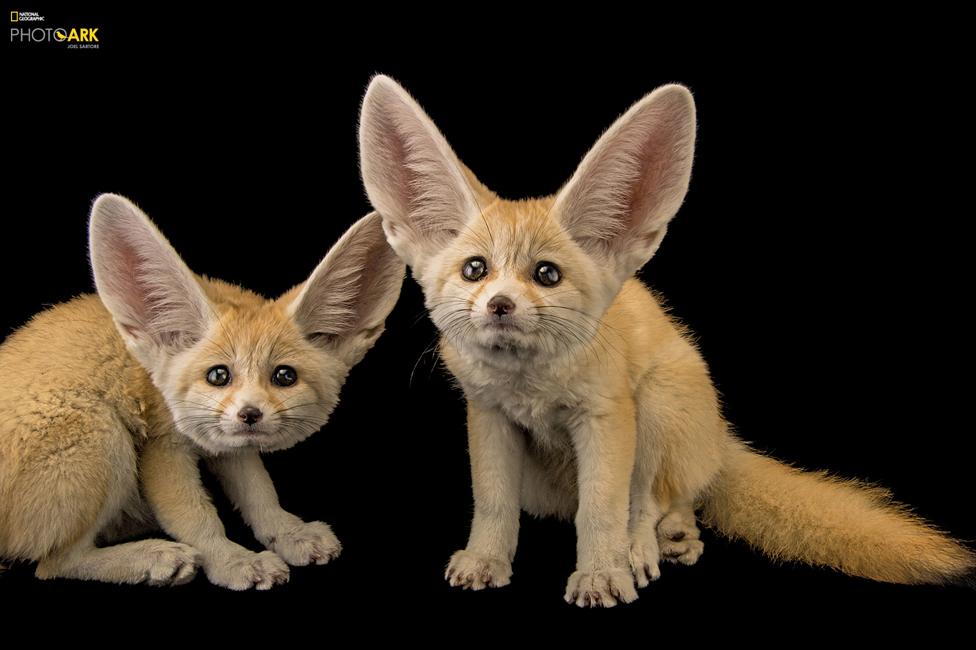
Fennec Fox (Vulpes zerda) St. Louis Zoo, Missouri © Photo by Joel Sartore/National Geographic Photo Ark
"The goal of Photo Ark is to celebrate all creatures great and small and to let people know that as these other species go away, so could we," he says.
"It's in humanity's interest not to throw away all of creation - to keep things around so we have a healthy planet."
All photographs by Joel Sartore/National Geographic Photo Ark, external

Join the conversation - find us on Facebook, external, Instagram, external, Snapchat , externaland Twitter, external.